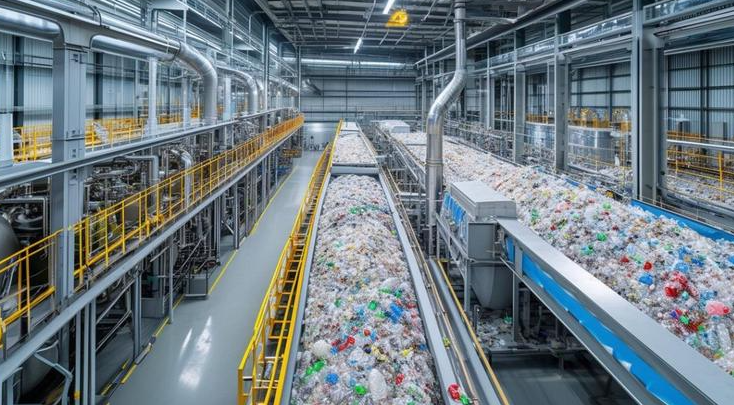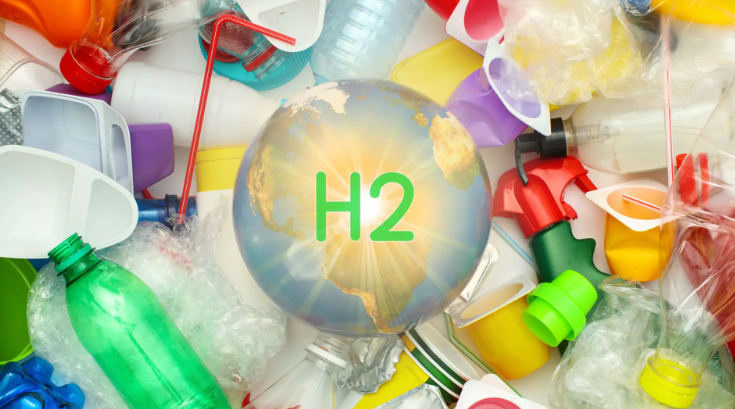By Alicia Moore
View the original article here

The Scale of the US Plastic Waste Problem
The United States is projected to generate 220 million tons of plastic waste in 2024, a 7.11% increase from 2021. Over a third of this waste is expected to be mishandled, contributing significantly to global plastic pollution. With only 19.8% of PET, HDPE, and PP plastics being recycled, the remainder often ends up in landfills, oceans, or incinerators.
The theoretical Plastic Overshoot Day for 2024 is set for this week, September 5, marking when plastic waste production surpasses the planet’s management capacity. A study by EA Earth Action identifies the top offenders in per capita waste generation:
- Michigan
- Indiana
- Illinois
The concept of converting plastic waste into hydrogen fuel offers a potential solution to both waste management and energy challenges. This process involves:
- Collection
- Sorting
- Shredding
- Pyrolysis
- Steam reforming
Each step contributes to a cleaner planet while producing a valuable resource. Hydrogen fuel, a cleaner alternative to fossil fuels, could aid in reducing greenhouse gas emissions and ensure that plastic waste is put to purposeful use.
Implementing such a system would require carefully designed infrastructure, stringent regulations, and public cooperation. While challenging, the impact on the environment, human health, and biodiversity warrants such an endeavor. Given that 94% of Americans are inclined to recycle plastics and limit single-use plastic, there is potential for such transformative systems to take root.1
Rice University Breakthrough
Researchers at Rice University have pioneered a easy to scale-up method to convert mixed plastic waste into high-yield hydrogen gas and graphene through rapid flash Joule heating. This breakthrough not only generates clean hydrogen but also creates valuable graphene.

Summary of How it Works and Benefits of Their Process:
- Flash Joule heating is a process used to convert plastic waste into hydrogen gas and graphene.
- The method rapidly heats plastic waste to high temperatures, causing hydrogen to vaporize and leaving behind graphene.
- This process is scalable, low in complexity, and environmentally friendly.
- The production of graphene helps offset the costs of hydrogen production, making it economically viable.
- Flash Joule heating can produce high-value nanomaterials efficiently and at a low cost.
- The process results in reduced carbon emissions compared to traditional methods.
- It can synthesize various graphitic materials, such as holey and wrinkled graphene, which have increased surface areas for applications in energy storage and water purification.
- The method demonstrates high yields of hydrogen gas from common consumer waste plastics.
- Life-cycle assessments show this method releases less CO2 than most current hydrogen production methods.
- The approach supports sustainable energy transitions and addresses plastic waste effectively.
Nanyang Technological University Innovation
NTU in Singapore has developed an energy-efficient method using light-emitting diodes (LEDs) and a commercially available vanadium catalyst. This process operates at room temperature, drastically reducing the energy footprint compared to traditional heat-driven recycling methods.3
Combining these cutting-edge technologies into a unified system could yield significant environmental and economic benefits. By deploying LED-based pyrolysis followed by advanced steam reforming techniques, the process efficiency can be maximized while minimizing greenhouse gas emissions.
“Integrating these technologies into a circular economy framework, where waste is treated as a resource rather than a disposal problem, will also drive market acceptance and investment.”
This approach reduces the plastic burden on landfills and oceans, and addresses energy security issues by providing an alternative, sustainable fuel source.
Environmental and Economic Impact
Upcycling plastic waste into hydrogen fuel offers significant environmental and economic benefits. By diverting plastic waste from landfills and oceans, this process can mitigate:
- Soil contamination
- Leachate production
- Marine pollution
The reduction in microplastics entering the food chain would have positive implications for both marine life and human health.
Economic Benefits
Creating and operating hydrogen production facilities from plastic waste would generate new jobs across various sectors, from engineering to facility management. The demand for specialized skills in pyrolysis, steam reforming, and hydrogen purification would foster new educational and vocational opportunities.
The shift to hydrogen fuel derived from plastic waste can offer a competitive edge in the face of increasing regulatory pressures to reduce carbon footprints and fluctuating fossil fuel prices. Advancements in technology promise to reduce the cost and energy requirements of hydrogen production, enhancing the feasibility and affordability of scaling up these processes.
In Summary, converting plastic waste into hydrogen and graphene offers a multitude of environmental benefits. This innovative process drastically reduces the amount of plastic ending up in landfills and oceans, where it can leach harmful substances into the ground and marine ecosystems.
By transforming plastic waste, not only is pollution minimized, but valuable graphene is produced, which can be used across various industries, from electronics to materials science. Furthermore, the hydrogen generated serves as a clean energy source, as it emits only water when used as fuel, contributing to a sustainable energy future. This water emission is so clean that some consider it drinkable, showcasing the immense potential of this technology to support environmental and energy goals.
Exploring the full potential of upcycling plastic waste into hydrogen fuel allows the United States to address both environmental sustainability and economic viability. With strategic investments, supportive regulations, and public engagement, this approach can mitigate plastic pollution, foster a circular economy, and position the nation on a sustainable path towards energy transition and environmental stewardship.
- Geyer R, Jambeck JR, Law KL. Production, use, and fate of all plastics ever made. Sci Adv. 2017;3(7):e1700782.
- Wyss B, Luong DX, Tour JM. Recycling plastic waste into graphene and clean hydrogen. Carbon Energy. 2021;3(3):475-485.
- Salehzadeh Einabad M, Dehghani H, Nagarajan D, et al. Light-driven plastic waste valorisation to hydrogen fuel and carbon nanomaterials. Nat Catal. 2022;5:706-716.
